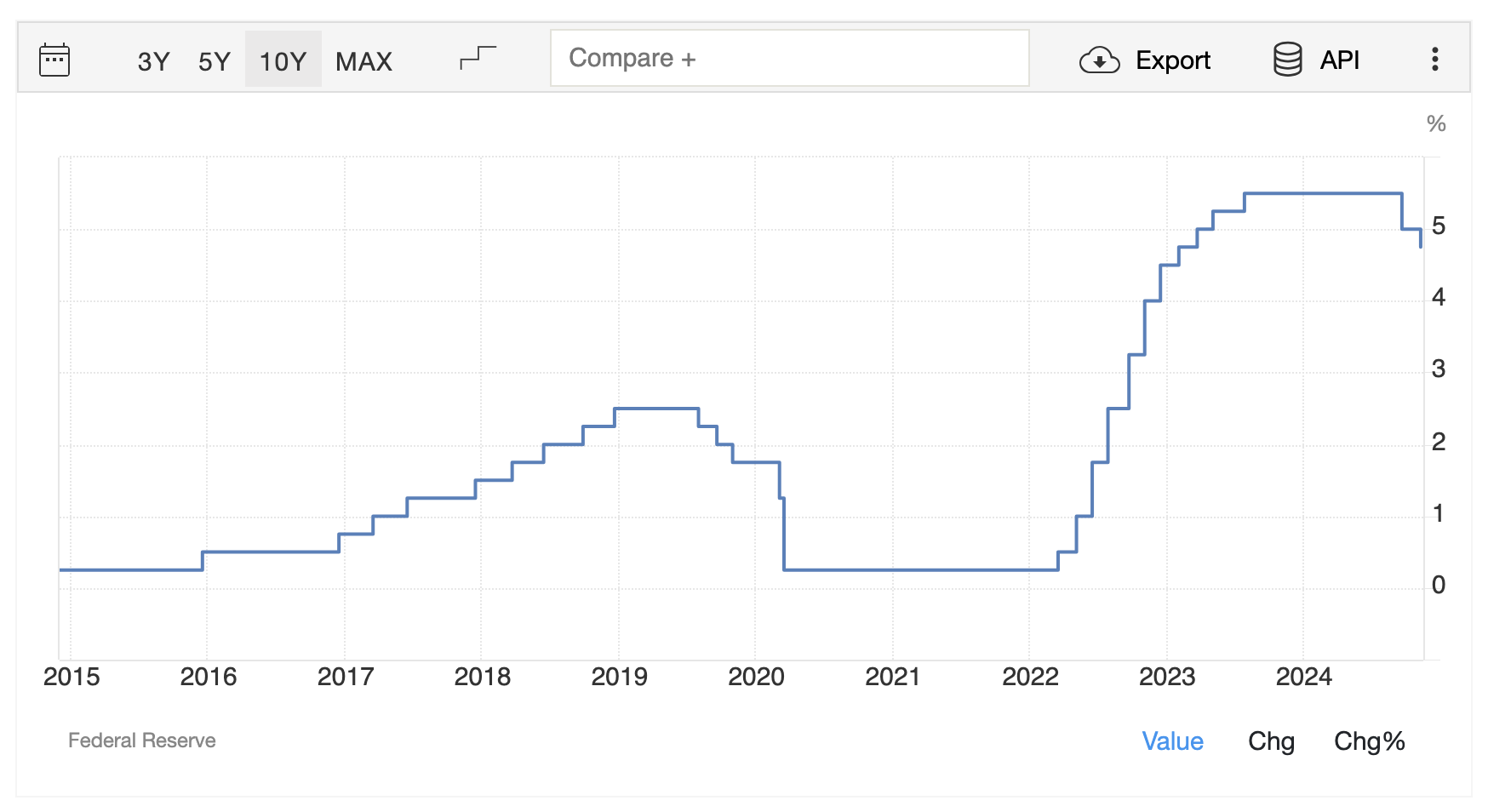Markets Anticipate Federal Reserve Rate Cut In December
- This topic has 0 replies, 1 voice, and was last updated 10 months ago by .
-
Topic
-
Financial markets are increasingly betting on a 0.25% interest rate cut by the Federal Reserve this December 18, despite inflation remaining steady and the labour market showing resilience.
Analysts suggest that such a move could provide a cushion for the slowing US economy without triggering a renewed surge in inflation.
The US economy has been grappling with a slowdown in key metrics.
Job growth, while steady, has moderated significantly. Since July, the economy has added an average of 148,000 jobs per month, a noticeable decline from the 207,000 average recorded earlier in the year.
This cooling pace of employment growth reflects a gradual easing of demand in the labour market, aligning with the Fed’s efforts to maintain economic balance while curbing inflationary pressures.
A December rate cut could be aimed at addressing soft patches in the economy, particularly in interest-sensitive sectors like housing, manufacturing, and business investment.
Lower borrowing costs could encourage businesses to invest in expansion and innovation, while consumers may find it more attractive to finance big-ticket purchases like homes and vehicles.
This boost in spending and investment could help counteract signs of weakening momentum without overstimulating the economy.
Inflation has been a key focus for policymakers, and recent data suggests it has stabilised near the Fed’s 2% target. This stability gives the central bank some flexibility to ease monetary policy without fear of reigniting price pressures.
However, analysts caution that the Fed must tread carefully.
Cutting rates too aggressively or prematurely could undermine its inflation-fighting credibility, particularly if inflation risks reemerge due to geopolitical tensions or supply chain disruptions.
Financial markets have already begun pricing in expectations for the rate cut, with US Treasury yields slightly declining and equity markets showing optimism.
Historically, such policy adjustments have had mixed results, depending on the broader economic context. While lower rates can provide short-term relief, their long-term effectiveness in sustaining growth depends on accompanying structural economic improvements.
For investors, a Fed rate cut in December could signal a more accommodative stance heading into 2025, potentially providing a tailwind for risk assets like stocks and high-yield bonds.
However, market participants will be closely monitoring Fed Chair Jerome Powell’s commentary for clues on future policy direction.
Balancing economic support with inflation control remains a delicate act, and the central bank’s decisions will undoubtedly shape the investment landscape in the months ahead.

Image: Trading Economics